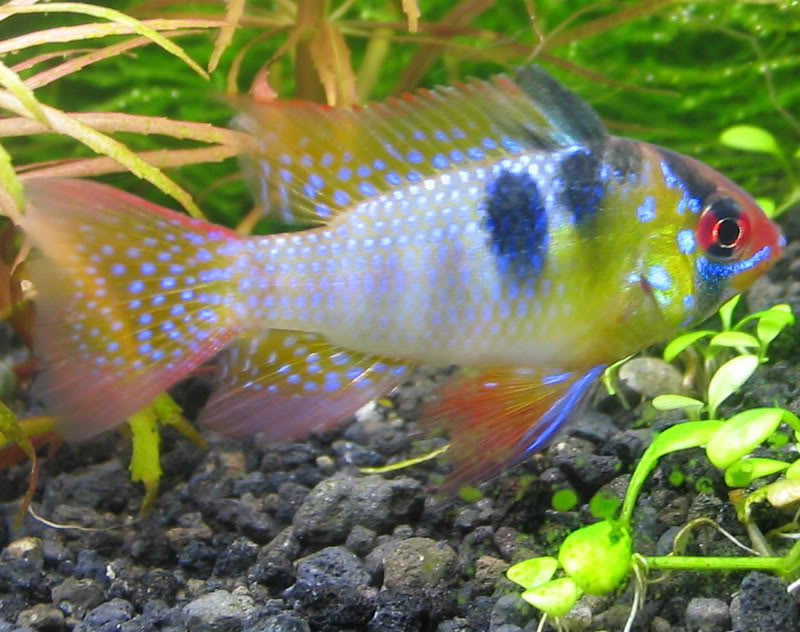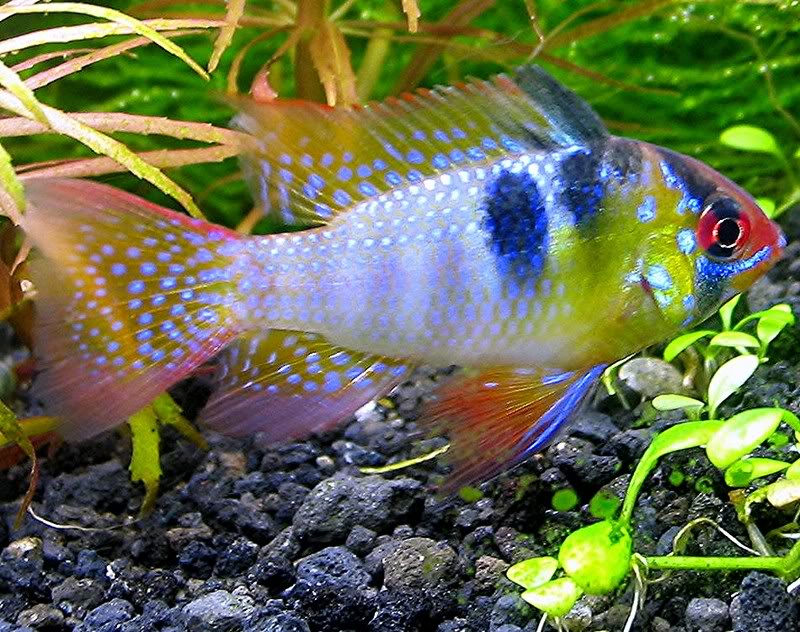This is a photography question, but one related specifically to the appearance of a planted tank.
I think i have a good grasp on all of the basics: lighting, exposure, distances etc. But I am looking for suggestions on perfecting the photos. To some degree, I have started to modify my plant choice to improve photo quality, and I am looking for more suggestions on perfecting photos.
Here are a few examples of what I have found that helps photos come out better:
Picture 1:

I will use this photo as an example of poor exposure. Notice how the driftwood is under-exposed while the dwarf sag (front right) is over-exposed. The bright green plants make it hard to get everything exposed properly, so I took out the dwarf sag.
Picture 2:

(this is my most current picture)
I don't like how the green myrio (upper right) looks in this pic. It is a very beautiful plant, but does not look very good in my photos. You can see how it looks like a green cloud instead of the really cool plant that it is. I don't like the way it looks but have not yet found a solution. Perhaps the leaves are too fine to be photographed from that distance.
Does anyone else have any suggestions for "fine tuning" their photos?
I think i have a good grasp on all of the basics: lighting, exposure, distances etc. But I am looking for suggestions on perfecting the photos. To some degree, I have started to modify my plant choice to improve photo quality, and I am looking for more suggestions on perfecting photos.
Here are a few examples of what I have found that helps photos come out better:
Picture 1:

I will use this photo as an example of poor exposure. Notice how the driftwood is under-exposed while the dwarf sag (front right) is over-exposed. The bright green plants make it hard to get everything exposed properly, so I took out the dwarf sag.
Picture 2:

(this is my most current picture)
I don't like how the green myrio (upper right) looks in this pic. It is a very beautiful plant, but does not look very good in my photos. You can see how it looks like a green cloud instead of the really cool plant that it is. I don't like the way it looks but have not yet found a solution. Perhaps the leaves are too fine to be photographed from that distance.
Does anyone else have any suggestions for "fine tuning" their photos?



